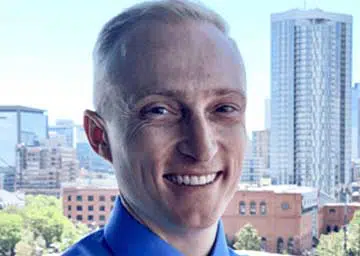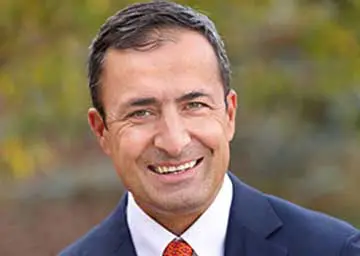As your child’s bones grow and develop, what are called their growth plates are prone to injury. Growth plate fractures are cracks in a child’s growth plate—the special section of the cartilage at the ends of their long bones. These fractures may vary from mild to serious, but it is important to find out as soon as possible. They often need immediate treatment because they can affect how the bone will grow. If one leg were to stop growing because of a growth arrest, the legs could end up being different lengths. Since height is determined by multiple growth plates in the hips, knees, and ankles, a growth plate injury in just one of these areas may impact your child’s height significantly. With proper and early treatment, most growth plate fractures heal without complications. Your child depends on you, and you can depend on your child getting the care they need from the experienced orthopedic specialists at OCC – Advanced Orthopedics in Denver, Parker, or Aurora, Colorado.
OVERVIEW
The growth plate is exactly what it sounds like—a special piece that helps bones grow and develop into the correct size and shape. Growth plate fractures are very common injuries. These plates are the softest and weakest sections of the skeleton — sometimes even weaker than surrounding ligaments and tendons. An injury that might cause a joint sprain in an adult can cause a growth plate fracture in a child. Growth plates are involved in approximately 15 percent of all fractures that occur in children, often as a result of falls and injuries to the limbs.
ABOUT GROWTH PLATES
Growth plates are soft areas of developing cartilage at the ends of a child’s long bones. These bones include the femur (thighbone), the lower legs (tibia and fibula), the forearm (radius and ulna), and the bones in the hands and feet. There are usually two growth plates in each long bone, one at each end. As kids grow, the growth plates harden into solid bone. A growth plate that has completely hardened is a “closed growth plate.” After the growth plate closes, the bones are no longer growing. Growth plates usually close near the end of puberty. For girls, this is usually when they’re 13-15; for boys, it’s when they’re 15-17.
WHAT IS A GROWTH PLATE FRACTURE?
Growth plate fractures are breaks in the growth plates. The prognosis of growth plate fractures depends on several factors, including the type of injury. Orthopedic surgeons classify growth plate fractures according to the Salter-Harris classification system. This classification helps to distinguish different types of fractures. This is why growth plate fractures are also called Salter-Harris fractures. This system divides growth plate fractures into five types:
- Type 1: A break that separates the growth plate cartilage from the end of the child’s bone
- Type 2: The crack in the growth plate that also spreads to the shaft of the bone. These are the most common type.
- Type 3: The fracture breaks a piece of the growth plate and the end of the affected bone loose. These fractures are more common in teens and older children because their growth plate has started hardening into adult bone.
- Type 4: Similar to type 3, but more severe. The fracture breaks off a piece of the growth plate, the end of the bone, and its shaft.
- Type 5: A crack in the growth plate caused by crushing pressure on a bone. These are the least common type.
CAUSES
Growth plate fractures happen the way any fracture can happen, most commonly through sports or playground accidents. They can happen from competitive sports such as football, basketball, hockey, running, dancing, or gymnastics or recreational activities such as biking, sledding, skiing, or skateboarding. Overuse injuries, also called repetitive stress injuries, happen from repeating the same movement over and over. Two such injuries are called “Little League Elbow” and “Jumper’s knee”. Car accidents can also result in growth plate fractures.
SYMPTOMS
The symptoms of a growth plate fracture vary depending on the degree of seriousness. Symptoms can include:
- Pain or swelling in the injured limb
- Warmth, bruising, or redness in the injured area
- Tenderness
- Inability to move or use a body part
- Obvious deformity in the injured area, such as looking bent, crooked, or out of place
NON-SURGICAL TREATMENTS
If a child has a minor, non-displaced fracture, the doctor may treat it like a sprain and suggest a splint, cast, or walking boot to protect the area for 4-6 weeks. Orthotics such as shoe inserts or braces may be used to provide support and help correct any alignment issues that could affect the healing of the growth plate. Physical therapy can be used to maintain joint flexibility. While over-the-counter pain medications may be considered, there are always special considerations with children. For example, choose age-appropriate formulations, strictly adhere to recommended dosage instructions based on the child’s age and weight, and be mindful of the ingredients. Typically, these types of fractures do not require long-term care.
WHEN IS SURGERY INDICATED?
Several cases may require different types of surgery.
Reductions
If bones are out of place (displaced), they have to be put back into the right position with a procedure called a reduction. A reduction is also called “setting the bone.” There are two types of reductions: in a closed reduction, the bones are gently moved back into the right position. No incision is needed. An open reduction is done under general anesthesia. The surgeon makes an incision and moves the bones into the right position. Surgical plates, screws, or wires are often used to keep the bones in place. After both, the child will usually wear a cast, splint, or brace to make sure the bones don’t move during healing.
Open Corrective Surgery
An injury to a growth plate can cause it to harden and “close” prematurely, meaning it stops producing new bone before your child has stopped growing. An injury to a growth plate may also cause only a part of the growth plate to stop producing new bone while the rest of the growth plate continues to function normally. A growth plate that is partially closed can lead to complications, such as a bone that curves as it grows or limbs that are not the same length. With open corrective surgery, a surgeon may be able to remove the deactivated section of the growth plate so that it no longer affects growth in the bone.
Epiphysiodesis
If, after an injury, a growth plate in one of a child’s legs has “closed” or stopped producing new bone tissue, and the child is almost done growing, surgeons may recommend surgically “closing” the growth plate in his or her other leg—a procedure known as epiphysiodesis. This prevents the legs from being of different lengths, which can lead to complications such as difficulty walking and early development of arthritis. This type of surgery may also be used to stop a growth plate that has started growing too quickly as a result of an injury.
Bone Lengthening or Shortening Surgeries
If a growth plate injury in a child’s leg is not identified and treated while the child is still growing, the affected leg could grow longer or remain shorter than the leg on the opposite side. When this happens, our doctors may recommend a bone lengthening or shortening surgery. This surgery is most often recommended when a teen has reached maturity and stopped growing or is expected to stop growing soon.
GETTING THE RIGHT DIAGNOSIS. GETTING THE RIGHT DOCTOR.
Most likely, the first course of action if a surgeon suspects a growth plate fracture is to order X-rays. Some growth plate fractures cannot be seen right away on an X-ray, and other tests may needed, including ultrasound, CT scans, or MRIs. Sometimes it is necessary to take images of the opposite side for comparison. In treating younger children, a surgeon needs to understand that the child may not be able to communicate that they are injured or accurately describe their symptoms. That is why you need not only the most skilled and experienced orthopedic surgeons but also the most caring and compassionate surgeons like those you’ll find at Advanced Orthopedics in Denver, Parker, or Aurora, Colorado. They understand how to make both you and your child more comfortable. They’ll feel less afraid, as you will. When it comes to your child, you want the best for them. So does your surgeon at Advanced Orthopedics. If you think your child might have a growth plate fracture, schedule an appointment today.






















